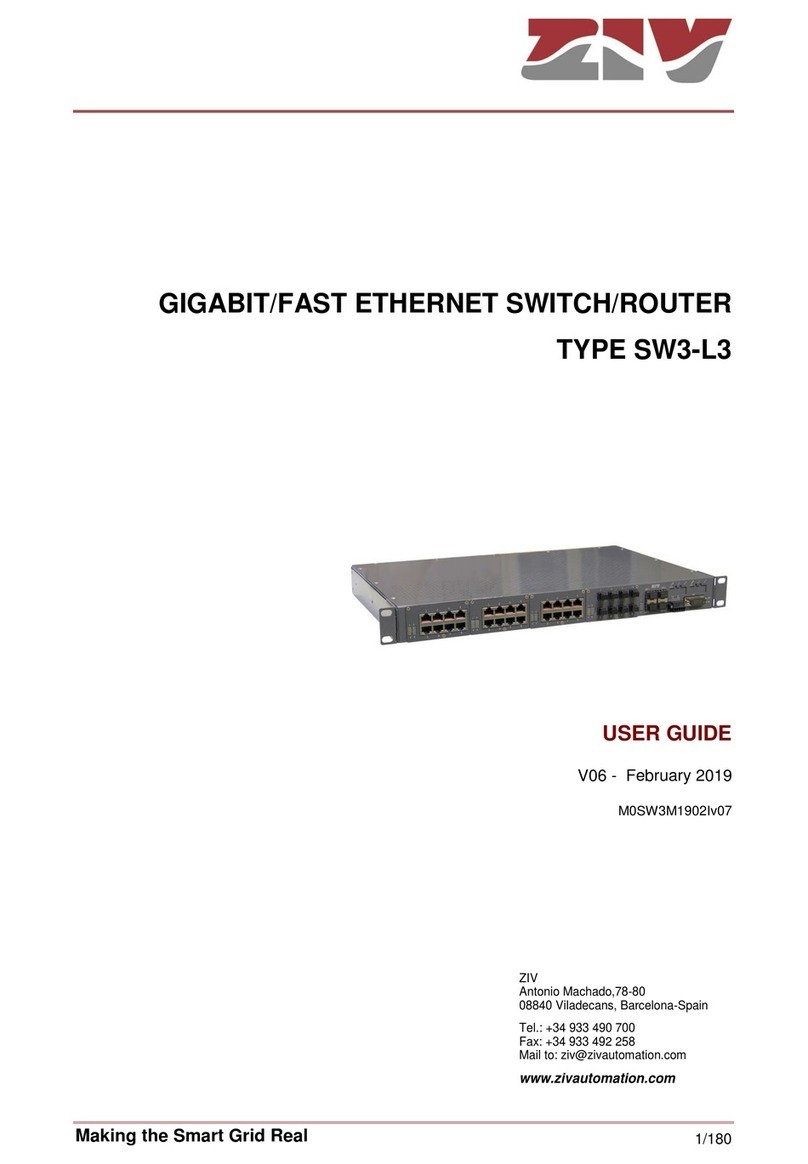SWT
GIGABIT/FAST ETHERNET SWITCH TYPE SWT 6/137
USER GUIDE - M0SWTA1903Iv09 - V09 March 2019
1 INTRODUCTION
1.1 GENERAL
SWT is a Gigabit/Fast Ethernet switch intended for big scale LAN deployments where:
port density,
switching performance, and
logical complexity
are the main challenges to surpass.
SWT devices bring the necessary capabilities to implement the automation of electrical
substations according to the IEC 61850 standard.
The SWT can be managed locally and remotely, through a console or through a built-in
web server, HTTP or HTTPS, SSH connection and Telnet.
The SWT also supports the SNMPv1, SNMPv2c and SNMPv3 protocols, as well as other
protocols and services suchas LLDP, GARP/GMRP, IGMP, NTP/SNTP, TACACS+ and RADIUS.
1.2 MAIN CHARACTERISTICS
Some of the SWT most important features are described below.
❖Grouping of services and architectures.
Services may be grouped and discriminated, some not being accessible with others,
through the configuration of different VLANs.
Each VLAN is different from the others thanks to a specific identifier, called VID, which is
included in the VLAN tag and specified in the standard IEEE 802.1q. It permits several
VLANs to share resources, either switching equipment such as the SWT, or links
between switching equipment, guaranteeing that each VLAN traffic will remain isolated
from the others.
The standard 802.1q admits three types of frames: untagged frames, tagged frames with
the VLAN ID (VID) identifier and the priority (tagged) or only the priority (priority tagged,
VLAN = 0).
The SWT may adapt to different network architectures, such as: star, double star, ring,
double ring, and linked rings.





























